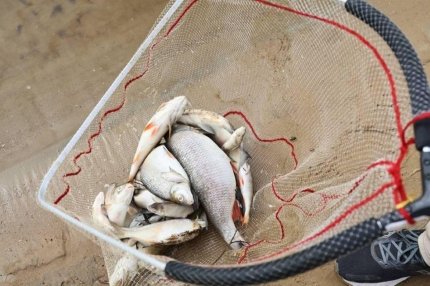From August 26 to September 24, 28,137 kg of dead fish were collected from the Seim and Desna rivers in the Chernihiv region. This is the first pollution of water bodies in the region, associated with discharges of sugar molasses from the Tyotkin sugar factory, located in the Kursk region of the Russian Federation.
Points of attention
- River pollution in Chernihiv Oblast caused by discharges of sugar molasses has led to significant environmental damages exceeding UAH 300 million.
- The contamination of the Seim and Desna rivers highlights the necessity of careful monitoring and control of water quality to prevent further ecological harm.
- Repeated pollution incidents in the region demonstrate the urgency of addressing and mitigating the sources of pollution to protect the ecosystem.
- The excessive chemical oxygen consumption in the Desna River indicates the presence of organic pollutants, posing a threat to aquatic life.
- The collaboration between Ukrainian authorities and environmental agencies is crucial to assess and address the environmental impact of river pollution in Chernihiv Oblast.
Ukraine has suffered millions of losses from the pollution of rivers in the Chernihiv region
This was announced by the head of the State Environmental Inspection in the region, Serhii Zhuk.
According to the calculations of ecologists, the amount of damage caused to the environment is currently 338 million 16 thousand 551 hryvnias.
As for repeated pollution, it has already reached the Desna River in the area of the village of Velike Ustya of the Sosnytsk community from the Seimas.
Currently, the rate of chemical oxygen consumption (hereafter CHSK — ed.) in Desna is 39 mg/m3 against a norm of 30 mg/m3. The numbers are small, but it is clear that the process of "river disease" is taking place. That is, if the HSK increases, it means that the river absorbs more oxygen, it becomes less than needed.
He also added that on September 25, there was no fish kill in Desna, but it is too early to draw conclusions, the situation must be monitored further.

Pollution in Seim and Desna: what is known
On September 17, it became known about repeated pollution in the Seim River in Sumy Oblast. According to the information of the Sumy OVA, the plague of fish in the river is connected with water pollution by organic substances.
On September 22, repeated pollution of the Seim River reached Chernihiv region in the area of the Baturyn community. A new deterioration in water quality is observed, but it is expected to be less critical than the previous one.
For the first time, it became known about the contamination of the Seimas in Chernihiv Oblast on August 26. Fish died en masse in the river, and the water itself turned black. An excess of ammonium and a critically low level of oxygen were found in the water.
On August 28, polluted water from the Seim River had already reached Desna near the village of Velike Ustya in the Sosnytsia community.
On September 9, a dead fish appeared in Desna within Chernihiv. After that, in two days, seven tons of such fish were collected from the river within the city limits.
According to the results of water samples in the Seim and Desna rivers, which were taken on September 10, organic pollution was recorded. As reported by Mindovkillya, on August 14, it got into the Seim River from a sugar factory in the village of Tyotkino, Kursk Region of the Russian Federation.
As of September 11, the amount of damage to the environment due to pollution of the Seim and Desna rivers (within Chernihiv and Sumy regions) amounted to more than UAH 405 million.
As of September 22, according to the Ministry of Environment, the water in Desna has brightened, living aquatic biological resources are appearing. At the bottom, the sediment is dark in color, there is no unpleasant smell and fatigue of the fish is not observed.




